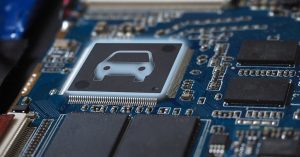In a significant stride towards enhancing the realism of autonomous driving hardware-in-the-loop (AD-HIL) test systems, Spirent Communications and dSpace have unveiled a strategic technology partnership. This collaboration leverages the strengths of both companies to create a comprehensive solution for validating vehicle behavior in critical scenarios using authentic satellite signals. The integration of the Spirent GSS7000 high-fidelity global navigation satellite systems (GNSS) simulator with dSpace’s AD-HIL is poised to optimize performance assurance, ensure continuity, and expedite development timelines.
The partnership builds upon years of successful cooperation between Spirent Communications and dSpace, reflecting their commitment to advancing technology in the field of autonomous driving. With the proliferation of driving automation levels, particularly at or beyond SAE Level 3, the precision and latency of GNSS-enabled systems become paramount. The collaborative effort addresses these challenges by offering a unified tooling solution from a single source.
At the core of this collaboration is the integration of Spirent’s GSS7000 simulator, renowned for its high-fidelity GNSS simulation capabilities, with dSpace’s AD-HIL platform. This integration serves as an additional sensor, validating driver assistance algorithms and playing a pivotal role in the digital homologation process. The companies emphasize that such a unified approach facilitates the validation of security-related functional tests for highly autonomous platforms, including scenarios involving jamming and spoofing.
Benefits for Autonomous Driving Validation:
Precision and Latency Optimization: As driving automation levels increase, the precision and latency of GNSS-enabled systems become crucial. The GSS7000 simulator, coupled with dSpace’s AD-HIL, ensures optimal performance, contributing to the efficiency and safety demanded by the industry.
Comprehensive Validation: The seamless integration of high-resolution GNSS simulators into dSpace’s test solutions allows for comprehensive validation of autonomous driving applications. This comprehensive approach is instrumental in increasing safety and precision through the integration of authentic positioning data.
Security-Related Functional Tests: The collaboration enables the validation of security-related functional tests, a critical aspect for ensuring the robustness of highly autonomous platforms. Scenarios involving jamming and spoofing can be realistically simulated, providing a robust testing environment.
Digital Homologation Process Enhancement: The integrated solution plays a crucial role in the digital homologation process, ensuring that autonomous vehicles meet the necessary regulatory standards. This is vital for gaining approvals and certifications for autonomous driving systems.
Expedited Development Timelines: The unified tooling from a single source streamlines the development process, expediting timelines for autonomous driving system development. This is particularly valuable in the dynamic and rapidly evolving landscape of autonomous vehicle technology.
Industry Perspectives:
Dr. Herbert Schuette, Executive Vice President at dSpace, underscores the significance of the integration, stating, “By seamlessly integrating Spirent’s high-resolution GNSS simulators into the dSpace test solutions.
Conclusion:The Spirent Communications and dSpace technology partnership marks a pivotal moment in the advancement of autonomous driving validation. By combining their expertise and cutting-edge technologies, the companies present a unified solution that addresses the evolving challenges in the autonomous driving landscape. As the industry strives towards higher levels of automation, the integrated solution promises to play a crucial role in ensuring the safety, precision, and security of autonomous vehicles. This collaboration exemplifies the power of strategic partnerships in propelling the automotive industry towards a future of connected and autonomous mobility.







